WIC Program Benefits: A Starter Guide
The information in this article is current as of November 9, 2021.
Having a roof over your head sometimes isn’t enough. Even though you might have somewhere to live, you can be in an adverse position where you and your family don’t have the nutrition needed to stay healthy.

The number of households in the U.S. as of 2020 was over 128 million. If the average growth rate continues, this number would be 132 million by the end of 2021.
When you consider that the official poverty rate in America was a staggering 11.4% in 2020, it’s easy to see that millions of American people are facing food insecurity.
If you’re one of these people, you might be wondering about WIC Program benefits. Can you use it, and what benefits can you get?
In this article, we’ll provide an overview of the WIC Program and its benefits, including food items and more. We’ll also review the eligibility requirements, locations where you can apply, and how to use the WIC Prescreening Tool.
What Is the WIC Program?
The WIC Program, officially named the Special Supplement Nutritional Program for Women, Infants, and Children, provides nutrition and healthcare to low-income breastfeeding women, pregnant women, and children under five.
This is a federal government program that receives its funding from the U.S. Department of Agriculture.
WIC is available in all 50 states. Additionally, it’s available in 34 Tribal Organizations, the District of Columbia, American Samoa, and Puerto Rico.
It’s also available in the Commonwealth of the Northern Marian Islands and the Virgin Islands.
Eligibility Requirements for the WIC Program
To receive benefits through WIC programs, you need to be eligible. To be eligible, you need to meet four different criteria (all of them). These include the categorical, income, residential, and nutrition risk criteria. We’ll review each of these in detail now.
Categorical
Participation in this program is primarily reserved for breastfeeding, non-breastfeeding postpartum, pregnant women; children younger than five years old; and infants. Women whose pregnancies have terminated or been lost also meet this criterion.
Other people who can meet the categorical criterion include guardians or parents who are the sole provider, including foster parents, grandparents, and guardians.
Income
Another eligibility criterion is the income requirement. There are two ways you can meet this. First of all, if your pre-tax income falls between exactly or below 185% of the poverty income guidelines for the U.S., you will meet the income eligibility criterion.
Note that the Income Standard changes every year. This is because the poverty income guidelines for the U.S. are set every year, issued by the Department of Health and Human Services.
If you’re interested in applying this year, then you can take a look at the current income guidelines for the WIC within your state. You can find this information on your state’s WIC website page by searching “WIC (your state name)” and navigating to your state’s official WIC page. Look for a .us or .gov suffix in the URL to make sure you’re looking at an official page.
Automatic Income Eligibility
Another way to meet the income requirement is through Automatic Income Eligibility. It works like this. If you already are participating in particular programs, you can automatically be eligible through automatic income eligibility. Some of these programs might include:
- SNAP
- Medicaid
- TANF (which was previously known as AFDC)
There might also be state-specific programs in the location where you’re participating that can determine you to be automatically eligible for WIC benefits.
Residential
Another criterion for being eligible for WIC is that you’re a resident of the state within which you’re applying for WIC. So, for example, if you want to apply for the WIC Program in N.Y., you need to be a resident of New York state.
Note that some states may consider you eligible if you’re a resident who is an undocumented immigrant. California is one example. If you are an undocumented immigrant who is a resident, check your state’s WIC website to see if you may qualify.
Nutrition Risk
The final eligibility requirement for the WIC program is nutrition risk. To meet this criterion, you need to meet with a health professional. They have to determine that you have a dietary or medical condition on your state’s nutrition criteria list for WIC.
Locations Where You Can Apply
If you think that you meet the eligibility requirements for the WIC program, then you might be wondering, “Where can I apply for a WIC program near me?” The answer is that there are many different locations where you can apply for this program, including:
- Hospitals
- Schools
- Country health departments
- Mobile clinics
- Community centers
Additionally, you can apply for these benefits at migrant health camps and centers, public housing sites, and Indian health service facilities. If you want to find out which location is closest to you, check your state’s WIC website.
Not sure how to get this information? Check out the USDA’s contact map, where you can find most of this contact information.
WIC Program Benefits
Now that we’ve covered the WIC Program, we’ll cover the benefits you can receive through this program. These benefits include food items, breastfeeding support and education, nutrition counseling and education, and more.
Food Items
WIC food is full of calcium, protein, vitamins C and A, iron, and other essential ingredients. The food items usually include cheese, milk, eggs, breakfast cereal, brown rice, whole-wheat bread, and peanut butter.
They also include legumes, canned fish, juice, and beans. Additionally, you can receive infant formula through this program.
Breastfeeding Support and Education
If you’re a breastfeeding mother receiving WIC Program benefits, you’ll also access breastfeeding support and education. This can ensure that you and your baby are as healthy as possible during the period when you’re breastfeeding them.
Nutrition Counseling and Education
By receiving nutrition counseling through the WIC Program, you can ensure that you’re making good nutritional decisions for yourself and your family. Additionally, you’ll have access to nutrition education, so you can learn more about which foods are healthy for you.
Screening Referrals to Additional Services
If you meet the eligibility requirements for WIC that we already covered in this article, the chances are that you’re also in need of other types of assistance. But, again, WIC can be incredibly helpful in helping you get access to these assistance types.
This is because of the benefit that you’ll have access to screening referrals to additional social, welfare, and health services.
Vouchers for Farmers’ Markets
If you enjoy fresh food from farmers’ markets, you’re in luck. The WIC Program also offers vouchers with which you can buy WIC-approved vegetables and fruits from farmers’ markets that are authorized for you to buy these foods.
Using the WIC Prescreening Tool
Now that you’ve learned about the WIC Program and its benefits, you might be interested in finding out if you’re eligible and applying within your state. In this case, you can use the web-based WIC Prescreening Tool application to get started.
Through this tool, you can find out whether you’re likely someone who can end up getting WIC benefits.
If you get that result, the tool will give you the contact information you can use to contact your state’s WIC office. Once you have this information, you can contact that office to set up a certification appointment with them.
Additionally, the tool will give you a summary of the responses you’ve provided while using it. You can bring this along with you to your certification appointment.
You’ll also get information about the documentation you’ll need to bring along.
Feeding Your Family Right
In this article, we’ve reviewed the WIC program, including who it’s for, where it’s available, and the eligibility requirements you need to meet to get benefits through this program. We’ve also reviewed the types of locations where you can apply.
We’ve also reviewed the WIC Program benefits, and how you can use the WIC Prescreening Tool to guide you in finding out if it’s likely you’re eligible and how to continue the application process within your state.
The WIC Program in your state can be a powerful tool to help you meet the nutritional needs of your family and save money, too!
Save Money on Your Wireless Phone Service
If you qualify for SNAP benefits, you also qualify for Lifeline service. Lifeline is a federal benefit program that makes it possible for low-income consumers to receive access to free or heavily discounted communication services. Click here to find out more and apply for this valuable benefit.
Enjoy Recommended Resources and Amazon Deals
If you’re looking for more ways to save, check out our Recommended Resources page, where you can learn how to save 50% on Amazon Prime membership and use your EBT card on Amazon.



